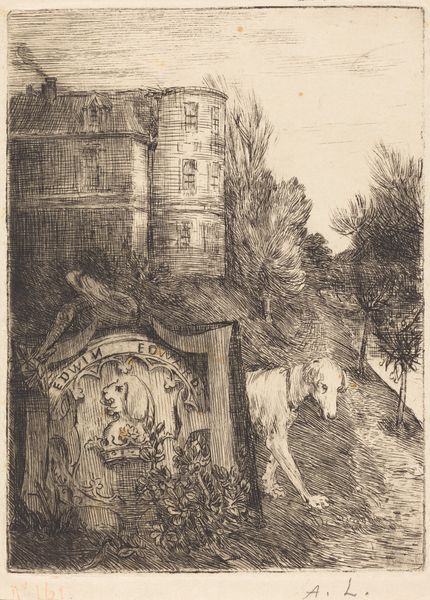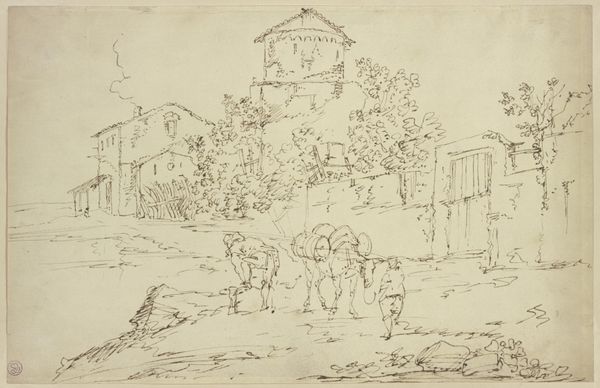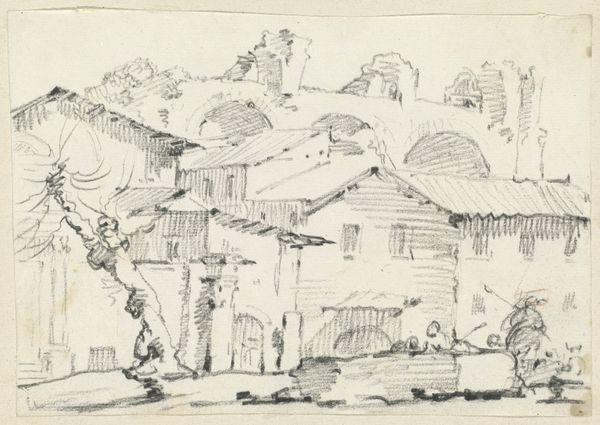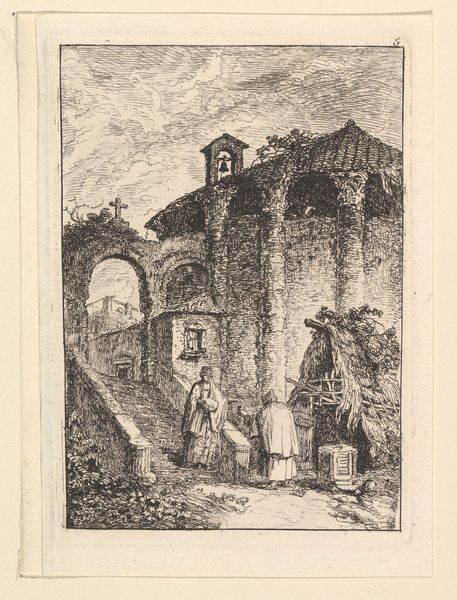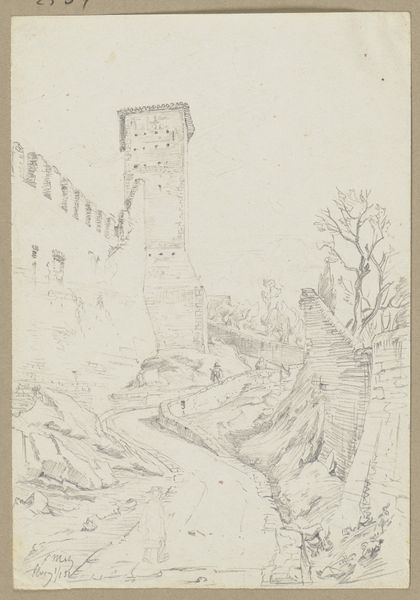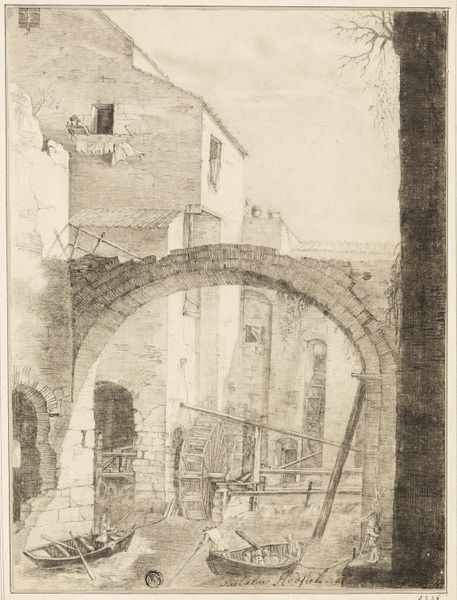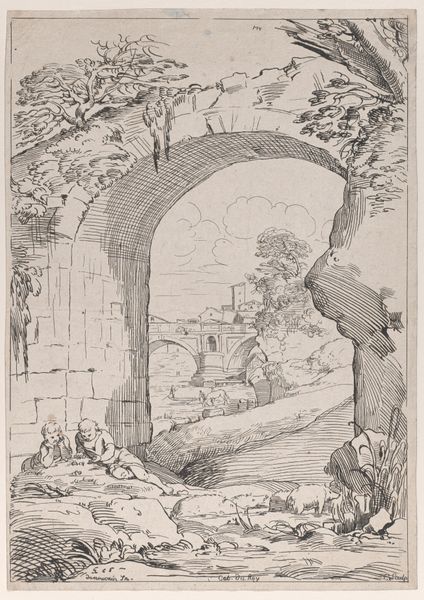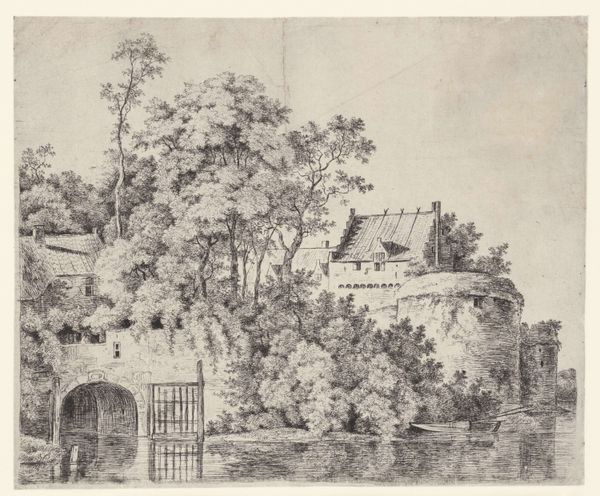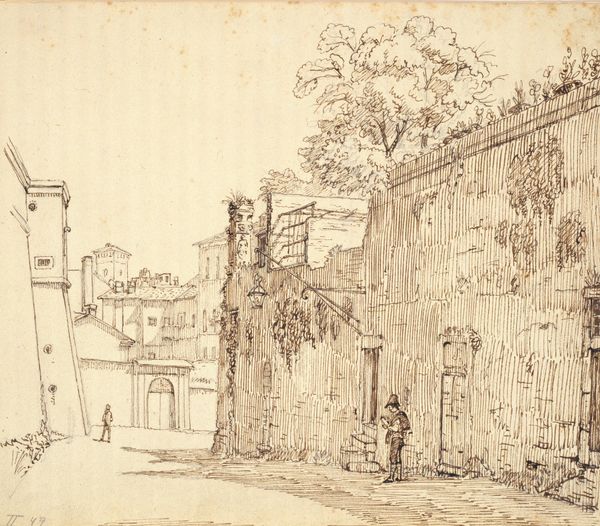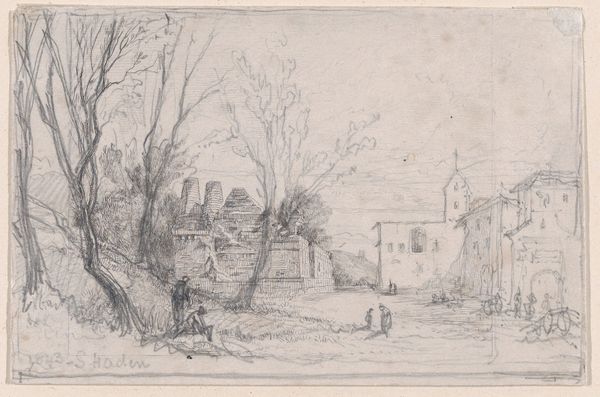
drawing, pen
#
architectural sketch
#
drawing
#
pen sketch
#
sketch book
#
landscape
#
personal sketchbook
#
sketchwork
#
romanticism
#
pen-ink sketch
#
pen work
#
sketchbook drawing
#
pen
#
cityscape
#
storyboard and sketchbook work
#
sketchbook art
#
realism
Dimensions: 168 mm (height) x 164 mm (width) (bladmaal)
Editor: Here we have Wilhelm Marstrand’s “Street in Rome,” a pen drawing from 1837. It feels so immediate, like a quick snapshot, but the crumbling walls give it a weight of history. What do you see in this piece? Curator: Beyond the surface representation of a Roman street, I see a layering of social narratives embedded within the architectural structures. How does the isolation of the woman figure in the foreground strike you, set against these imposing walls? Editor: I hadn't thought about it that way, but she does seem separate from the scene somehow. Almost like a passerby, instead of an integrated part of it. Curator: Exactly. Think about the Romantic era fascination with ruins and the past, but also consider the societal position of women in 19th-century Europe. The "Street in Rome" becomes a stage on which to consider themes of gender, class, and the power dynamics inherent in the built environment. Do you get a sense of confinement, or even exclusion? Editor: I can see that, especially with how the walls seem to box her in, even though the street continues behind her. The height and the angle almost become oppressive. Curator: Marstrand was working at a time of rising social consciousness. So is this street simply a picturesque scene, or is he subtly commenting on the lived experiences of individuals, especially women, within these spaces? And furthermore, can we consider how tourism impacts the space, the figure being caught in a street perhaps radically different from that of someone who resided there? Editor: That definitely gives me a new perspective. It’s not just a pretty landscape, it’s a coded commentary. Curator: Precisely. Art like this encourages us to decode the hidden dialogues between the artist, their historical context, and the subject matter itself. It gives insight into not just urbanism but societal values of that particular place and time. Editor: I'll definitely be thinking about the "Street in Rome" differently now! Curator: As will I. The more angles we bring, the closer we get to the truth, which may be all there is.
Comments
No comments
Be the first to comment and join the conversation on the ultimate creative platform.
